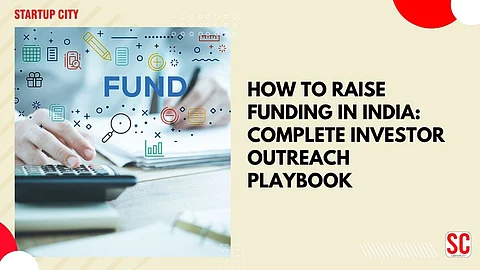

Funding in India
Imagine this: You've built a solid MVP, you're getting early traction, and your team is hustling hard. But there’s one thing missing — capital.
If you’ve ever asked yourself, “How do I raise funding in India?” — you’re not alone. Thousands of startup founders are navigating this exact journey. The good news? I've been there, worked with hundreds of founders, and I’ve put together a no-fluff, battle-tested investor outreach playbook tailored for the Indian startup ecosystem.
Let me walk you through it.
According to Inc42, over 90% of Indian startups fail within the first five years, and a key reason is lack of funding. But here's the catch — it's not just about the money, it's about your approach.
When I first tried raising funds for a startup, I focused too much on the pitch deck and too little on relationships. Big mistake. Fundraising is 90% relationship-building and 10% pitching.
Let’s break down what really works.
Before you send that first email, ask yourself:
Do I have a clear and scalable business model?
Have I identified my target market and shown early signs of PMF (Product-Market Fit)?
Is my cap table clean and compliant?
Keep it concise — 10-12 slides max. Cover:
Problem
Solution
Market Opportunity
Business Model
Traction
Team
Financials
Ask (How much you're raising and what for)
“The best decks don’t tell the whole story. They make investors want to hear the story from you.”
– Paul Graham, Y Combinator
Investors love clarity. Prepare a digital folder with:
Financial statements
Market research
Product demo
Customer testimonials
Founders' bios & ESOP policy
Not all money is smart money. Ask yourself:
"Who do I want on my cap table?"
Angel Investors – High-net-worth individuals (HNIs) with domain expertise
Micro VCs – Small venture capital funds focused on early-stage startups
Institutional VCs – Sequoia India, Blume Ventures, Elevation Capital, etc.
Corporate Venture Arms – Like JioGenNext or Google for Startups
Crowdfunding Platforms – Tyke, LetsVenture, Seedrs (UK), etc.
This is where most founders go wrong. Here's your framework.
Use LinkedIn, Crunchbase, AngelList, and Indian platforms like LetsVenture or 100X.VC. Create a spreadsheet with:
Name
Firm
Past investments
Email/contact
Warm intro sources
Investors trust referrals. Reach out to:
Your mentors
Portfolio founders of that VC
Startup ecosystem enablers (accelerators, lawyers, consultants)
But… if you must cold email, make it count.
Cold Email Template:
Subject: Loved your investment in [Startup Name] — quick intro?
Hi [Investor Name],
I’m [Your Name], founder of [Startup]. We're solving [problem] for [target audience], and in the last [X months], we’ve achieved [key traction].
We're now raising [amount] to [goal]. I’d love to send over our deck and hear your thoughts.
Thanks and cheers,
[Your Name]
Your goal? Get them curious, not close the round.
Be ready to answer:
What’s your vision for the next 5 years?
Why you and why now?
What metrics define your growth?
“Investors don’t invest in ideas. They invest in founders who can execute.”
– Naval Ravikant
Bring your energy. Be honest about challenges. Investors appreciate clarity more than charisma.
Once the first 1-2 investors show interest, others will follow.
Here’s how to accelerate:
Set a closing timeline – 30-45 days
Use updates to build urgency – Send weekly progress emails
Show traction – More users, paying customers, media coverage
Pro Tip: Mention how much of the round is already committed (“We’ve raised ₹75L of our ₹1Cr round”).
Let me be blunt — these red flags will scare investors away:
Over-inflated valuations with no revenue
Unclear go-to-market strategy
Founders without skin in the game
No clarity on use of funds
Radio silence after first call
Take SkillFlick, a Bengaluru-based EdTech startup. They:
Identified 25 relevant micro-VCs
Got 3 warm intros via LinkedIn
Sent weekly updates
Hit 10K paying users in 3 months
They closed a ₹2Cr seed round from a Delhi-based VC and two angels — all in just 45 days.
That’s the power of intentional, structured outreach.
Let me leave you with this: Every great founder you admire once struggled with investor rejections. What separates the successful? Resilience and clarity.
So if you’re wondering how to raise funding in India — know that there’s no single path. But this playbook gives you the map. You just need to walk it.
Start now. Build relationships. Stay honest. Stay hungry.